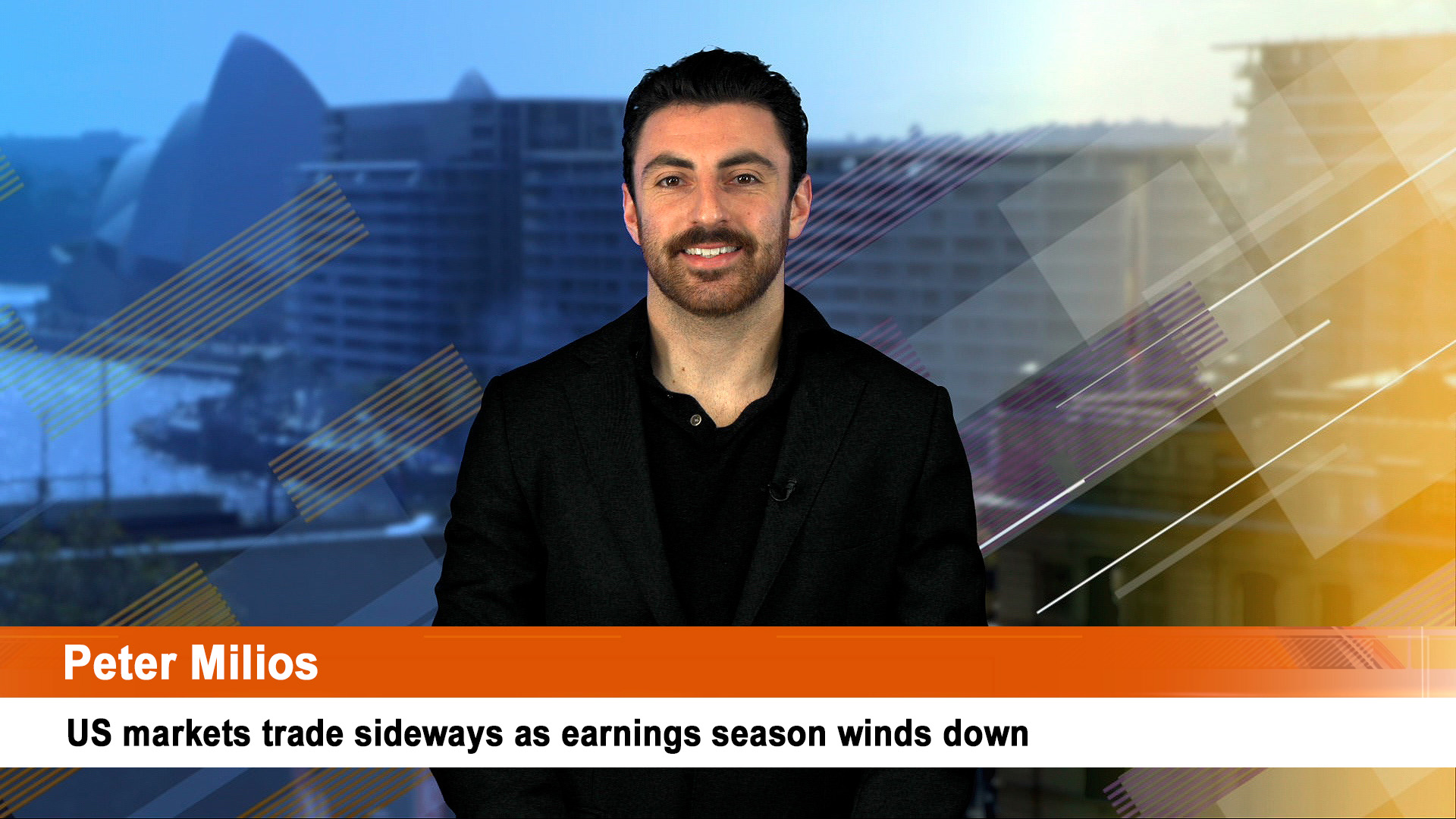Apple, Amazon and Alphabet – a trio of fallen tech giants in 2022 – but this week the big hopes of prolonging the nascent recovery in January by producing 4th quarter results that were better than the most pessimistic forecasts suggested.
There were even leaks to condition the markets about losses at Amazon, weaknesses in Apple’s iPhone sales and investors saw hope for Alphabet that they shouldn’t have after Meta’s quarterly revenues on Wednesday.
For some reason US investors misread Meta Platforms’ underperformance in the 4th quarter and a $US40 billion buyback as good tidings. Up went Wall Street – value stocks on the Dow were ignored as investors chased Meta shares and other techs. Meta shares closed more than 23% higher on Thursday after being up 30%, Apple shares were up 3.7%, Alphabet shares ended the day up 7% and Amazon shares surged more than 7%. Overall, the Nasdaq jumped a very strong 3.3%.
Market players were ready for the three As to deliver A-plus reports.
Instead, they got a trifecta of F-minuses and the afterhours reactions told the story: Apple shares down more than 3%, Alphabet shares off 4% and Amazon shares down more than 4% as well.
Investors being the optimists they are will try to find something optimistic in the three reports – just as they did with Meta – in an effort to provide justification for the January boom to continue.
The immediate spin from the optimists was that the reports were expected to be weak, especially Apple, but Amazon’s weak forecast for the current first quarter of 2023 forecast wasn’t expected. Oops.
Alphabet missed on the revenue and earnings lines as YouTube revenues again fell. Apple had weak sales of the iPhone but it managed a first – more than two billion devices around the world (but how many dead iPods, huh?).
Some analysts have said these figures reflected a weak 2022 environment thanks to rising interest rates, inflation and high energy prices after the Russian invasion of Ukraine a year ago and unhappy consumers.
But the jobs market remains super strong and there’s every chance it will weaken this year as inflation falls and the Fed continues to push up rates a couple of more times at least.
Economic growth is forecast to slow even further this year – but no recession. Even so consumers will not be all that happy to spend so the outlook for these tech giants could be very different come the back half of 2023, even if rates have stopped rising and Wall Street is charging ahead.
All three giants said they were hurt by the strong US dollar in the December quarter (which has now weakened significantly which is a bull point for global tech majors like this trio from now on through 2023). That could end up a big positive this year if rates have stopped rising and the greenback continues to weaken.
…………
While Apple said it had surpassed 2 billion active devices in the final months of 2022 for the first time, the tech giant still disappointed Wall Street with its first-quarter results. (Unlike most American companies, Apple’s financial year ends September 30.)
Apple reported revenue of $US117.2 billion, down 5% from the year-ago quarter. Wall Street analysts’ consensus forecast was for revenue of $US121.1 billion. That’s a big miss by both Apple and analysts.
That was especially due to a shortage of iPhones, but it made for a very weak Black Friday-Christmas selling season. There must have been quite a few empty stockings on December 25.
It was Apple’s first year-over-year quarterly revenue decline since 2019, and the biggest annual quarterly revenue drop since September 2016.
In its earnings release, Apple blamed a “challenging environment” during the December quarter, which included the wave of disruptions in China.
There was good news as revenue in the company’s Services unit (which includes streaming offerings like Apple Music and Apple TV+) set a record with $US20.8 billion in the quarter.
CEO Tim Cook said the miss was partially because of a strong dollar, and that Apple grew in most markets if you ignored the 800-basis-point negative impact of foreign exchange losses.
Cook also said that the supplies of iPhone 14 Pro and iPhone 14 Max were significantly reduced during the quarter, meaning there were fewer to sell to customers. Apple’s primary iPhone assembly plant in China was affected by covid lockdowns during the quarter, which Apple warned about in November.
That saw revenue from the iPhone —the financial cornerstone for the company — miss expectations at $US65.7 billion and down more than 8% from the December, 2021 quarter.
Apple delivered a shockingly weak earnings report. Jesse Cohen, Senior Analyst at Investing.com, said “Apple’s poor quarter proves that even the most valuable US traded company isn’t immune to the challenges facing the tech industry at large.”
Will other analysts listen and learn?
…………
Some analysts argued that Amazon’s quarterly revenues were better than expected at $US149.2 billion for the three months to December 31 (and up 9% from the $US137 billion a year earlier but much less if you take out inflation of around 7%), but then those same analysts had set the bar pretty low in their forecasts.
The big shock was the weak forecast for the current quarter (no wonder Apple has not given any forecasts since midway through 2020).
Amazon said it expects to post first-quarter revenue between $121 billion and $126 billion, representing year-over-year growth of 4% to 8%. Analysts were expecting sales to come in at $125.1 billion, according to Reuters forecasts
Amazon shares slid almost 5% in afterhours trading because the weak first-quarter guidance overshadowed the claimed better-than-expected revenue for the fourth quarter.
2022 was Amazon’s slowest year of growth in its 25 years as a public company. No wonder the shares lost almost half its value last year.
Operating income fell to $US2.7 billion in the fourth quarter, compared with $US3.5 billion in fourth quarter of 2021.
That included approximately $US2.7 billion of charges for changes in estimates related to self-insurance liabilities, impairments of property and equipment and operating leases (from closing warehouses and offices), and estimated staff severance costs. These charges primarily impacted the North America segment.
Net income slid to $US300 million in the fourth quarter, compared with $US14.3 billion (when accounting rules forced Amazon to book a big unrealised profit on its shareholding in the now faded electric van maker Rivian).
Amazon’s cloud business — Amazon Web Services —missed market forecasts for the fourth quarter, reflecting a slowdown in business spending (as did Microsoft last week with its Azure cloud business). AWS grew just 20% in the period, down from 27.5% in the third quarter.
Amazon’s WholeFoods supermarkets chain is struggling and management has ruled out any more investment in fresh foods until they can work out to make it pay – a telling admission of failure.
…………
Alphabet took a hammering everywhere as the weakness in digital advertising (exposed in the Meta quarterly but ignored by investors) hit search revenues at Google and overall revenues at YouTube.
Revenues and profits fell short of forecasts and the company warned of up to $US2 billion in new losses and costs from the recent staff sackings and the continuing shrinking of its office space needs in the US and globally.
YouTube – which has seen a boom in overall viewing and growth in its extensions in short-form video and pay-TV – reported an 8% slide in ad revenues of $US7.963 billion, compared with $US8.633 billion in the prior-year period. Like Meta with Facebook and Instagram, YouTube is facing rising competition from TikTok
YouTube’s revenue slide first appeared in the June quarter of last year and has worsened since as advertisers have forced the social media giants and their advertising groups to accept less for each ad.
Ad impressions are reportedly higher across the board but revenue per ads were reportedly down double digit for the likes of YouTube and Meta across most of 2022, especially the final six months.
Total revenue of $US76.05 billion fell about a half-billion dollars short of analysts’ forecasts. It was up 1% over year-ago levels, or 7% excluding foreign-currency fluctuations.
A pullback in digital advertising hit Alphabet hard in 2022, just as it hit other techs like Snap Inc. and Meta Platforms and media companies like the New York Times and a host of online only websites.
Last month, Alphabet announced the layoffs of about 12,000 workers. In the earnings release, the company said that would incur charges of $US1.9 billion to $2.3 billion, most of them recognised in the first current quarter of 2023.
The tech giant also said it is “taking actions to optimise our global office space,” which could result in another $US500 million in charges in the current quarter. “We may incur additional charges in the future as we further evaluate our real estate needs,” the company added
During the quarter, Google Cloud brought had revenues of $US7.32 billion — less than analysts expected but a very solid gain from $US5.54 billion in the final quarter of 2021.
Google’s Search and Other revenue came in at $4US2.60 billion, a modest decrease from $US43.30 billion the year prior.
Cohen told CNN that Alphabet “underperformed our expectations across almost all business units.”
That’s going to be the reality as these tech giants recover from the pandemic-driven boom years of 2020 and 2021. 2022 was the first year of recovery and much of 2023 looks like being a repeat to varying degrees.













